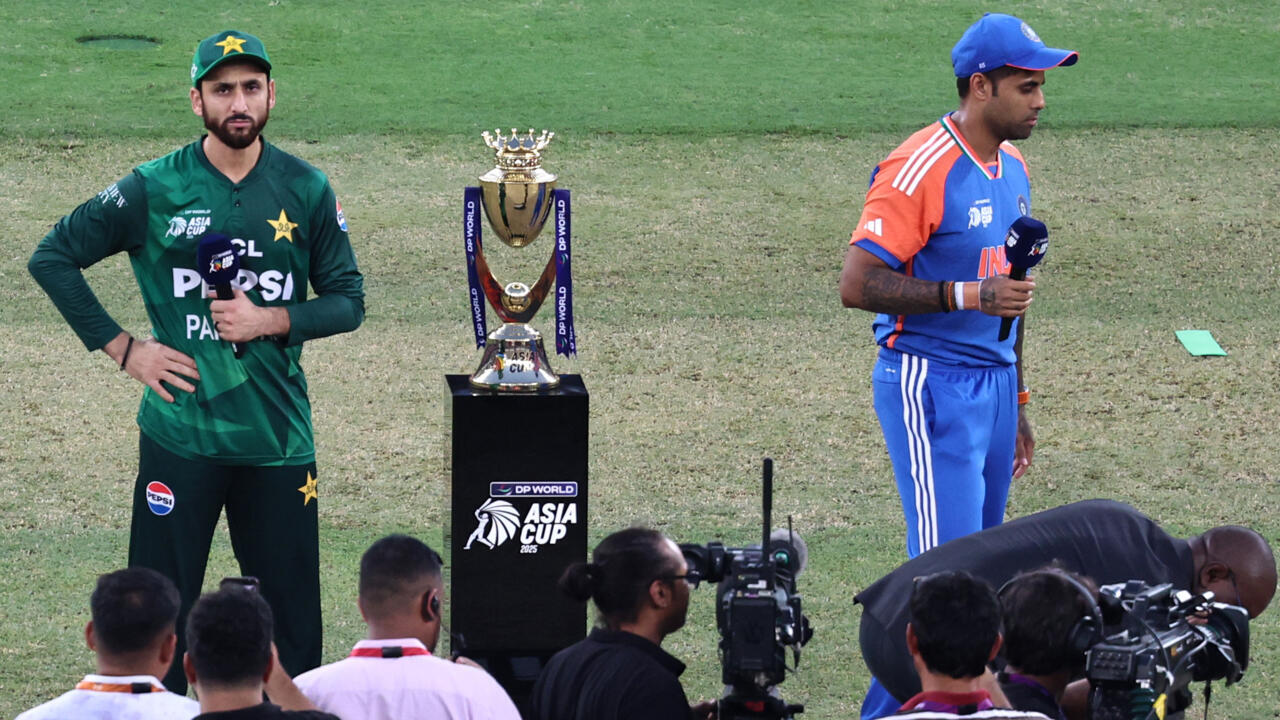The dust has settled on the Asia Cup pitches, but a lingering question of sportsmanship continues to echo across the cricketing world. Pakistan`s captain, Salman Ali Agha, ignited a debate that transcends boundaries and scorecards, accusing India of `disrespecting cricket` during a tournament already fraught with tension. This wasn`t about runs or wickets, but about an arguably more fundamental aspect of the game: the handshake.
The Unspoken Code: A Gauntlet Thrown
In a sport often lauded for its gentlemanly conduct, the refusal to exchange a customary handshake can feel like a direct challenge to its foundational values. Following India`s five-wicket victory over Pakistan—a crucial encounter in the Asia Cup—Salman Ali Agha didn`t mince words. At the post-match press conference, his disappointment was palpable, framing the Indian team`s actions not merely as a snub to Pakistan, but as a deeper affront to the very spirit of cricket itself.
“What happened in this tournament, I think it is very disappointing… they feel that by not shaking hands, they are disrespecting us but in fact they are disrespecting cricket. And anyone who disrespects cricket, I think it comes back and I am very sure that it will happen.”
Agha`s statements suggest a profound belief that such conduct undermines the integrity of the game. He contrasted India`s actions with Pakistan`s, highlighting his team`s willingness to pose with the trophy and accept medals even in defeat. This, he argued, represented the ethos of a “good team,” implicitly positioning Pakistan as upholders of traditional sportsmanship amidst perceived transgressions.
Beyond the Boundary Ropes: A Rivalry`s Nuances
The India-Pakistan cricket rivalry is legendary, often serving as a microcosm of broader geopolitical dynamics. Every match is charged with immense pressure, anticipation, and an undeniable historical weight. However, even within this intense narrative, certain courtesies have traditionally prevailed. The handshake, a simple gesture, signifies mutual respect among competitors, acknowledging effort and sportsmanship irrespective of the outcome.
Agha further elaborated on his team`s decision to occasionally cancel pre-match press conferences, portraying it as a reactive measure to India`s perceived transgressions. “We were not the ones to start,” he asserted, implying a chain of events initiated by the Indian side that necessitated a response, thus elevating a seemingly minor incident into a reciprocal exchange of perceived slights.
The `Instructions` and the Irony of Public Display
Perhaps the most intriguing detail from Agha`s account involved a specific Indian player, Suryakumar Yadav. Agha recalled Yadav shaking his hand during private interactions—at the captains` press conference before the tournament and during a meeting with the match referee. Yet, when faced with the public gaze, the gesture was conspicuously withheld.
“He shook my hands even during our meeting with the match referee. But he doesn`t do it when he`s in front of everyone. I am sure, if it was up to him, he`d have done it. He`s just doing what he`s been instructed, which is fine.”
This raises a curious question: In a sport that champions individual brilliance and integrity, are players now operating under directives that dictate their displays of sportsmanship? The implication of players being “instructed” to forego a basic courtesy in public, while maintaining civility in private, adds a layer of theatricality, bordering on irony, to the entire situation. It suggests a calculated public stance, potentially sacrificing genuine sporting interaction for an unspoken, perhaps strategic, objective.
Role Models and the Next Generation: A Troubling Message
Agha`s concerns extended beyond the immediate impact on the teams. He voiced a worry about the message being sent to young, aspiring cricketers and fans. As role models, athletes carry a significant responsibility, influencing perceptions and behaviors far beyond the field of play. When basic courtesies are abandoned, what lessons are inadvertently being taught?
“To a kid sitting at home, whether he/she is from Pakistan or India, what message are we sending? We are not giving a good message because people think of us as role models, so if we start behaving like this as role models then we are not inspiring anyone. And if we are inspiring, then we are inspiring them about the wrong things.”
This sentiment cuts to the heart of the matter. Cricket, at its best, is an educator of discipline, respect, and camaraderie. If the very figures meant to embody these ideals begin to falter on fundamental gestures of sportsmanship, the long-term ramifications for the game`s global appeal and its foundational principles could be significant. It forces a reflection on whether the pursuit of victory, however intense, should ever overshadow the values that elevate sport beyond mere competition.
The Game`s True Legacy: More Than Just Victories
While victories are the ultimate aim in competitive sport, the manner of winning, and indeed, the manner of losing, often defines a team`s true legacy. The Asia Cup incident serves as a stark reminder that cricket, the “gentleman`s game,” relies heavily on an unwritten code of conduct. When that code is perceived to be breached, especially between nations with such a storied rivalry, it invites scrutiny and prompts an essential conversation about the values we expect from our sporting heroes.
The ball is now, metaphorically, in the court of cricket`s governing bodies and, more importantly, in the hands of the players and boards themselves. Ensuring that the spirit of cricket remains vibrant and untarnished is a collective responsibility, far outweighing the transient glory of any single match or tournament. The game, after all, is greater than any individual contest.

